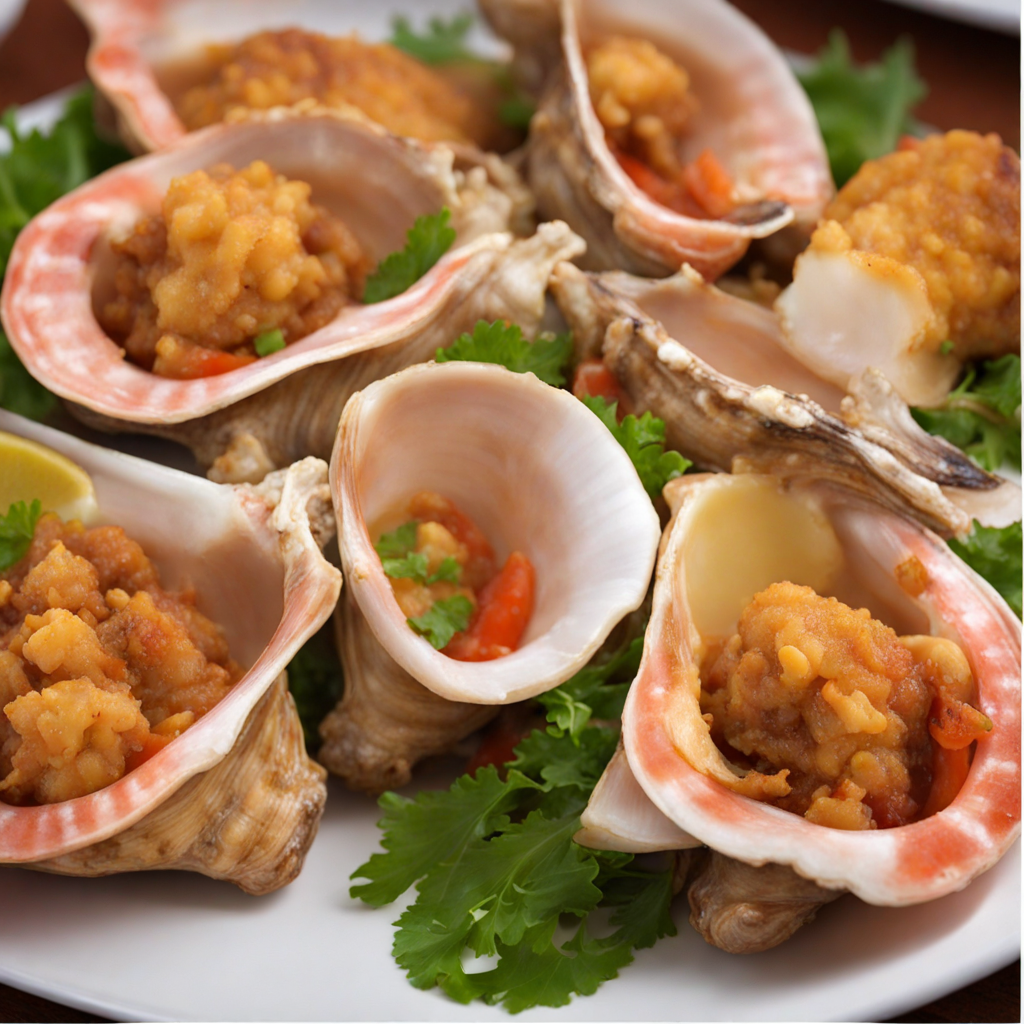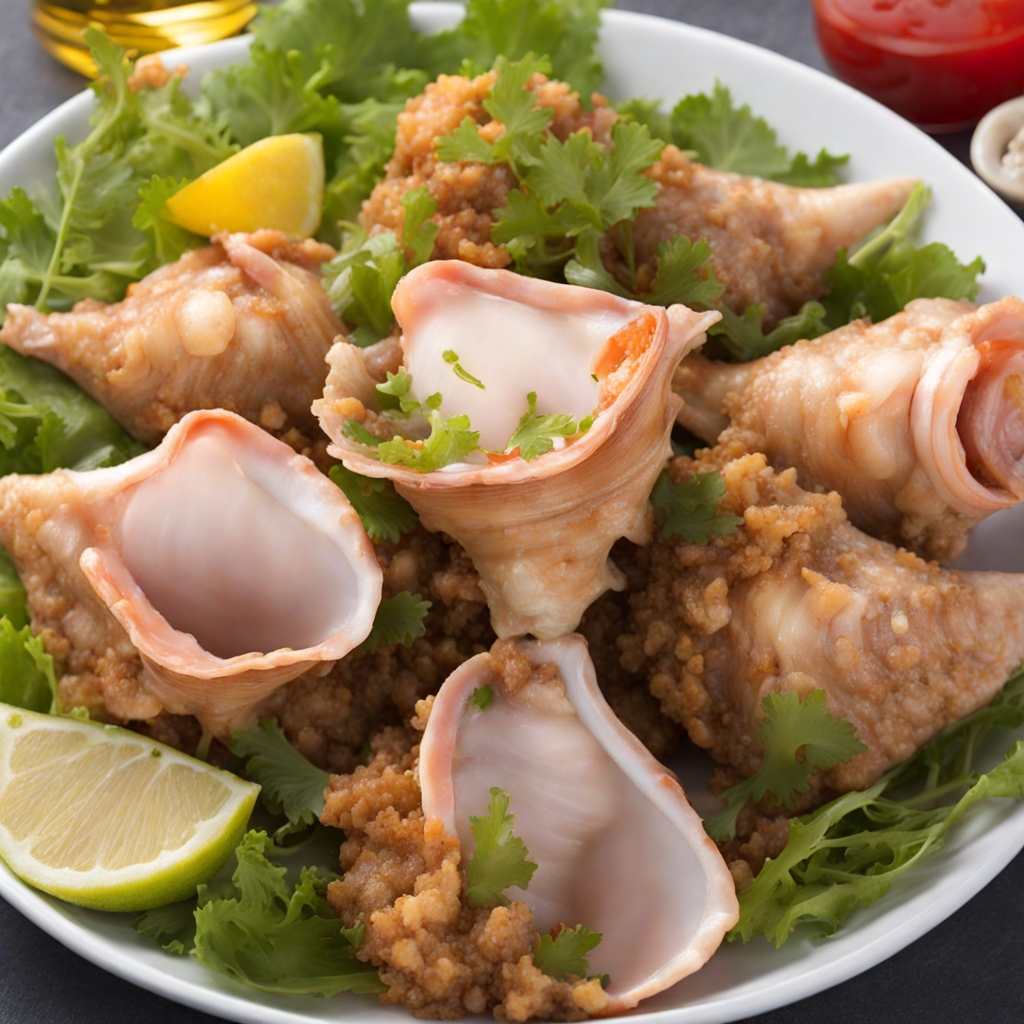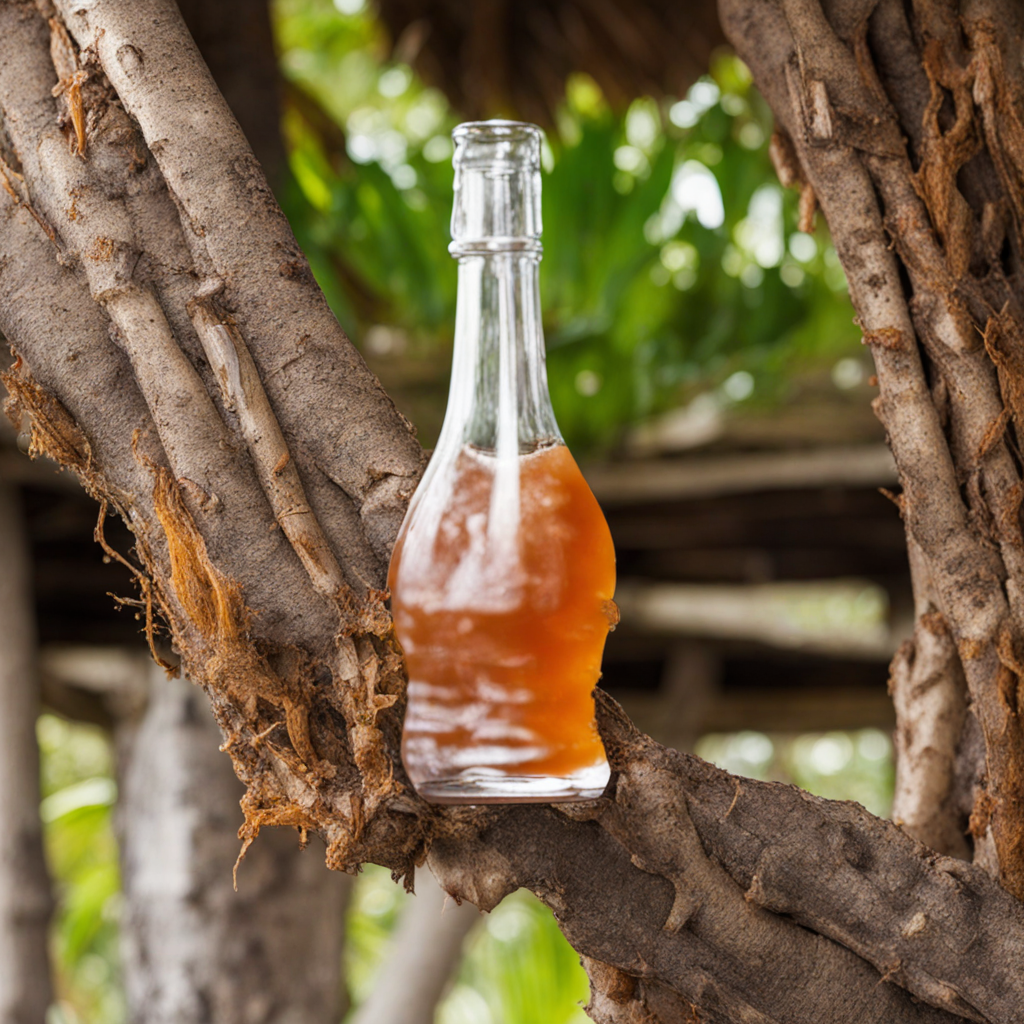Conch
Conch is a delectable delicacy that hails from the crystal-clear waters of Antigua and Barbuda. This marine mollusk is revered for its firm, yet tender meat, which has a subtly sweet flavor reminiscent of shellfish. The texture is uniquely satisfying, offering a delightful chew that pairs beautifully with a variety of seasonings and cooking methods. Whether served raw in a refreshing ceviche or lightly fried as fritters, conch presents an exciting canvas for culinary creativity, reflecting the vibrant flavors of Caribbean cuisine. In Antigua and Barbuda, conch is often prepared using traditional techniques that highlight its natural sweetness. One popular dish is conch stew, where the meat is simmered with a medley of vegetables, spices, and coconut milk, creating a rich and savory experience. Another favorite is conch salad, combining the fresh meat with tangy citrus juices, diced onions, and peppers for a bright and zesty appetizer. The versatility of conch allows it to shine in both casual beach shacks and upscale dining establishments, making it a beloved staple of island gastronomy. The experience of tasting conch is not just about the food itself; it's intertwined with the culture and warmth of the Caribbean. Enjoying conch dishes often comes with the backdrop of lively music, stunning ocean views, and the friendly hospitality of local chefs who take pride in their craft. Each bite transports you to the heart of the islands, where the essence of the sea and the spirit of the community blend seamlessly on your plate, offering an unforgettable journey into the flavors of Antigua and Barbuda.
How It Became This Dish
Origin of Conch The conch, a marine mollusk found in the Caribbean Sea, has a rich history rooted in the coastal regions of Antigua and Barbuda. Belonging to the family Strombidae, the conch has been a significant part of the diet and culture of the islanders for centuries. The indigenous peoples of the Caribbean, particularly the Arawaks and Caribs, were among the first to utilize conch as a food source, employing its meat in various dishes and utilizing its shell for tools and ornaments. The abundant presence of conch in the warm waters surrounding these islands made it an accessible resource for early inhabitants. With the arrival of European colonizers in the 15th and 16th centuries, the culinary practices involving conch began to evolve. The Spanish, British, and French influences introduced new cooking techniques and flavors to the region. As a result, conch became integrated into the local cuisine and was adapted by various cultures, showcasing its versatility. The methods of preparation varied, ranging from raw conch ceviche to fried conch fritters, each reflecting a blend of indigenous and colonial culinary traditions. \n Cultural Significance In Antigua and Barbuda, conch is more than just a food item; it holds a special place in the cultural identity of the islands. It is often associated with local celebrations, festivals, and communal gatherings. The annual Antigua and Barbuda Food and Culture Festival, for instance, features conch as a star ingredient, highlighting the island's culinary heritage. Local chefs demonstrate their unique recipes, showcasing the creativity and flavors that conch can bring to the table. Additionally, conch is a symbol of resilience and resourcefulness among the islanders. Historically, it has served as an important source of sustenance for local communities, especially in times when other food sources were scarce. The ability to harvest conch from the sea represents a connection to the natural environment and reflects the traditional fishing practices of the islands. This relationship between the people and the sea is deeply embedded in the local culture and is celebrated through food, storytelling, and community events. \n Development Over Time As time progressed, the consumption of conch in Antigua and Barbuda adapted to modern culinary trends while maintaining its traditional roots. The global rise in interest for Caribbean cuisine, particularly during the late 20th century, brought conch to the forefront of international culinary scenes. Chefs around the world began to recognize the potential of conch as a delicacy, leading to its inclusion in high-end restaurants and gourmet menus, further elevating its status. However, the increasing popularity of conch also raised concerns regarding sustainability. Overfishing and environmental changes threatened conch populations, prompting local governments and conservationists to implement measures aimed at preserving this valuable resource. Regulations on conch harvesting were introduced, including size limits and seasonal closures, to allow for the regeneration of conch stocks. The community has become increasingly aware of the need to balance economic benefits with environmental sustainability, ensuring that future generations can continue to enjoy this culinary treasure. \n Modern Culinary Innovations Today, conch is celebrated not only for its flavor but also for its culinary versatility. Chefs in Antigua and Barbuda have embraced innovation, creating a wide array of dishes that highlight conch's unique texture and taste. Traditional conch fritters remain a beloved favorite, often served with spicy dipping sauces. Additionally, conch has found its way into soups, salads, and even pasta dishes, showcasing the adaptability of this marine mollusk. Furthermore, the resurgence of interest in local, sustainable ingredients has led to a renewed appreciation for conch among both chefs and home cooks. Culinary workshops and classes focusing on conch preparation are becoming increasingly popular, allowing both locals and tourists to engage with this staple ingredient. The culinary landscape of Antigua and Barbuda continues to evolve, with conch at its heart, reflecting the islands' rich cultural heritage while embracing contemporary tastes. \n Conch in Culinary Tourism Culinary tourism has become a vital aspect of Antigua and Barbuda's economy, and conch plays a significant role in attracting visitors to the islands. Tourists are drawn to the authentic culinary experiences that include tasting freshly prepared conch dishes at local eateries, food festivals, and cooking classes. The tourism industry has recognized the importance of conch not only as a delicious food item but also as a cultural artifact that tells the story of the islands' history and traditions. Restaurants that specialize in local cuisine often feature conch prominently on their menus, offering visitors a chance to experience the flavors of Antigua and Barbuda. From conch chowder to grilled conch served with a side of rice and peas, these dishes provide an immersive culinary experience that connects tourists to the culture and history of the islands. Moreover, local chefs are increasingly using conch as a canvas for creativity, often combining it with other local ingredients to create unique fusion dishes that highlight the diverse flavors of the Caribbean. \n Conclusion: A Culinary Legacy In conclusion, conch is more than just a food item in Antigua and Barbuda; it is a symbol of cultural identity, history, and community resilience. Its journey from indigenous sustenance to a celebrated delicacy reflects the evolving culinary landscape of the islands while honoring the traditions of the past. As the world continues to discover the flavors of the Caribbean, conch remains at the forefront, reminding us of the interconnectedness of food, culture, and sustainability. The story of conch is a testament to the enduring legacy of Antigua and Barbuda's culinary heritage, one that will continue to inspire future generations.
You may like
Discover local flavors from Antigua And Barbuda







